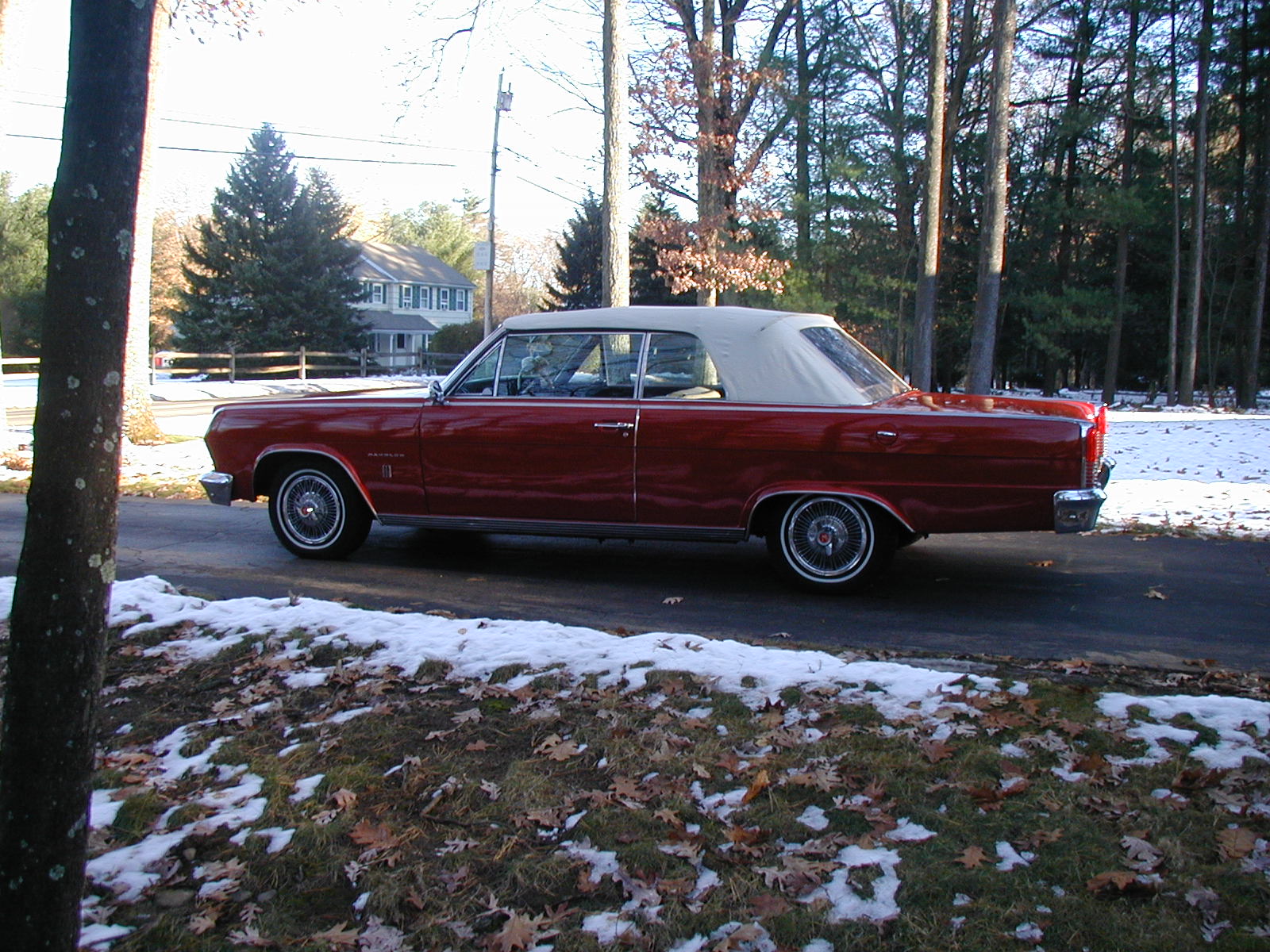Motoring Memories:
AMC Ambassador, 1965-1966
Story
by Bill Vance
Reprinted from,Canadian Driver Communications Inc and Bill Vance.
American Motors Corporation was
formed by the amalgamation of Nash and Hudson in 1954, and disappeared
as an entity when the Chrysler Corporation bought it in 1987. Through
its early years several strong men led AMC, each of whom put his stamp
on the products and took the company in different directions.
The first was George Mason.
Mason had been with the Nash side of the house since 1937 as president
of Nash's partner company, appliance manufacturer Nash-Kelvinator Corp.
He was the force behind the creation of the most successful early
postwar compact car, the Nash Rambler, which was introduced in 1950.
Mason was the architect of the Nash-Hudson merger into AMC, and became
its chairman and president.
All AMC cars became Ramblers, with Nash's old Ambassador name kept to adorn a slightly stretched and more luxurious Rambler.
Romney, true to his disdain for big cars, expanded the AMC model line by bringing back the original 2,540 mm (100 in.) wheelbase Rambler in 1958 after an absence of two years. Renamed the American, its revival proved to be a good move in a recession year, enabling AMC to enjoy its first full-year profit.
Romney's advertising strategy was to ridicule the "gas guzzling dinosaurs" being sold by the competition. The program paid off, and by 1960 Rambler sales had risen to third place in the industry.
Romney decided to enter politics, and left AMC in 1962 to run successfully for the governorship of Michigan. His place was taken by Roy Abernethy, a man who had spent most of his working life with Packard.
After a short stint with Willys-Overland, Abernethy had joined AMC in 1954 as vice-president of Nash sales. He was the opposite of Romney: he loved big cars, perhaps not surprising for someone who had been nurtured by Packard.
Abernethy quickly decided that AMC would not confine itself to the lower end of the market as it had under Romney. Rather, he wanted to go almost head-to-head with the Big Three (GM, Ford and Chrysler) by offering three distinct lines of cars: the small American, the mid-sized Classic, and a larger, more luxurious Ambassador. This attempt to become a full-line manufacturer was a costly decision, from which AMC would never fully recover.
In 1964 the Classic and
Ambassador models shared the same 2,845 mm (112 in.) wheelbase. Then
for '65 the Ambassador's was increased to 2,946 mm (115 in.) as
Abernethy started to move it upscale to compete with other
manufacturers' luxury models. In this quest, the Ambassador's wheelbase
would reach 3,099 mm (122 in.) by 1969.
The evidence suggests that Abernethy was on the right track with the mid-'60s Ambassadors, but that he just went too far. Sales of the Ambassador jumped from 18,647 in '64 to over 64,000 in '65. Then in 1966 they went even higher, to more than 71,000.
Those '65 and '66 Ambassadors had good reason to sell well because AMC designer Richard Teague had styled them with panache. A horizontal bar grille, folded in the middle, gave the front end a bold, rugged appearance. It was flanked by stacked quad headlamps.
Teague extended the beltline level from the headlights to the vertical taillights, giving the car an overall integrated look. It was topped by a crisply contoured greenhouse.
Under the hood could be had AMC's new 3.8-litre (232 cu. in.) overhead valve inline six, or overhead valve V8s of 4.7 litres (287 cu. in.) or 5.4 litres (327 cu. in.).
These could be mated to a variety of transmissions. There was a three-speed manual, with the console shifter getting an extra "Twin-Stick" lever to engage the optional overdrive; a three-speed "Flash-O-Matic" automatic with either column or console shift; and even a four-speed manual.
Abernethy was replaced by Roy Chapin Jr. as chief executive officer in 1967, but the die had been cast for the Ambassador, which continued to get bigger. Alas, it became more and more difficult for AMC to sustain the luxurious model, and it was discontinued in 1974.
The 1965 and 1966 Ambassadors represented a crossroad in AMC's history, one at which some historians would say it took the wrong turn. During its last years, the quest for survival would once again force the company to concentrate on smaller cars.
To many AMC enthusiasts, however, those mid-60s Ambassadors are remembered with nostalgia as being a pleasing combination of luxurious packaging and reasonable size.
For more Bill Vance automotive history, see www.billvanceautohistory.ca